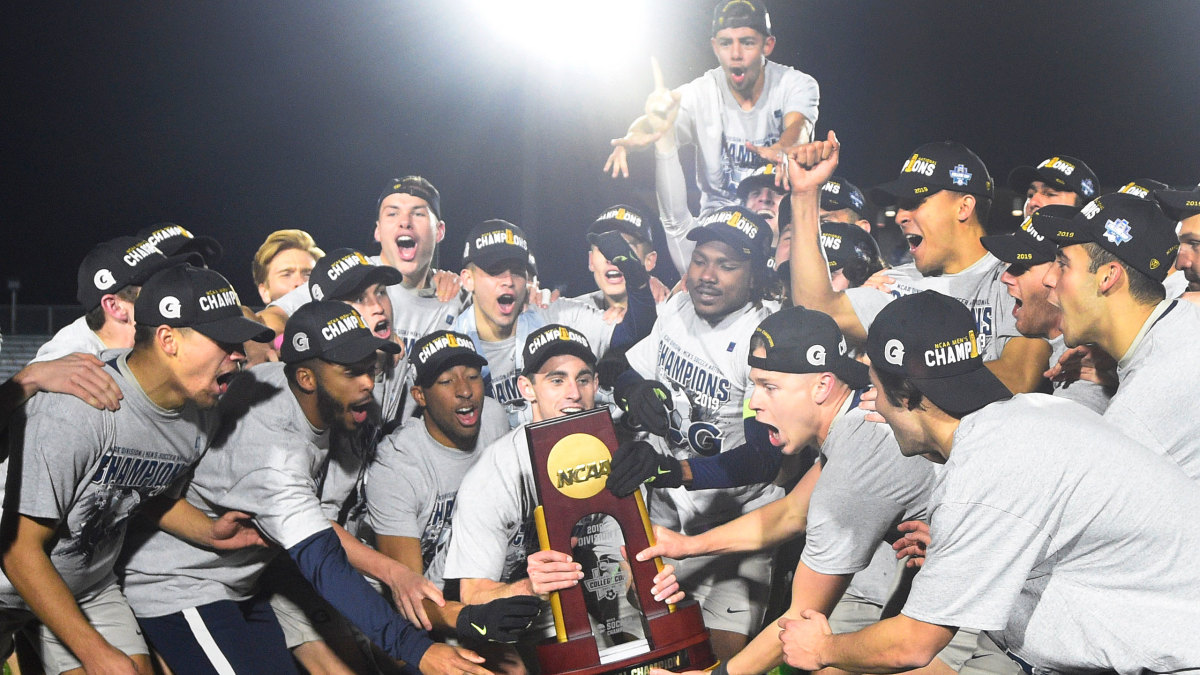After Weeks of Delaying, the Fate of NCAA D-I Fall Championships Rests in a Fitting Place
The can has been kicked. It has been kicked again. And again. And again. By the end of this, there may be nothing left of the can—the NCAA’s decision to play or cancel fall championships—other than a dented scrap of metal.
But alas, the buck has been passed for the final time. The can landed in the lap of the Division I Council, sent there—red bow and all—by members of the Division I Board of Directors, which only had just received the can Tuesday night from the NCAA Board of Governors, which had spent weeks punting the can.
For all this squabbling, the can has, in many ways, found its most sensible home. Its final resting place is the right one. Instead of having an academic-minded group of presidents and chancellors ruling on an athletic-related decision, the D-I Council—primarily encompassed by athletic directors—will determine the path forward for Division I fall sports. The group’s bigger brother, the D-I Board of Directors, wants a recommendation by Aug. 21. And there is just one course they are taking.
Barring something unforeseen—which isn’t impossible amid a pandemic—the Council will not vote to recommend the cancellation of fall championships. That’s the expectation among administrators across the nation and those close to Council members.

Before diving into the D-I Council dynamics, you should know what’s going on here: the Power 5 conferences, along with many others at the FBS level and even some in FCS, need and want to hold college football this fall. It is their cash cow and a sport that keeps afloat their athletic departments. Just like any other business in America, it needs to remain open (play games) in order to cater to customers (fans and TV viewers) to earn money (ticket sales and network contracts). While the NCAA does not control college football’s postseason at the FBS level, it does operate the postseasons of all other sports. The optics of playing a football season while other fall sports are shelved is a look that college athletic leaders are seeking to avoid, especially in these tenuous times—as the NCAA implores Congress for a friendly federal NIL bill and athlete unions spring up across the country.
There was enough fear that the Board of Governors would pull the trigger on fall championships that Power 5 leaders had started to explore holding their own. The Board of Governors, the highest governing body in the NCAA, is composed of 21 chancellors and presidents representing Division I, Division II and Division III programs. Conceivably, the latter two could have out-voted the former and, poof, fall championships are canceled. The Board would have made one, sweeping decision for 1,200 of its members. Michigan, with all its riches and wealth, would have been in the same boat as Marietta College.
So, the Board of Governors left the decision up to each one of its three divisional bodies. And wouldn’t you know it, the D-II and D-III governing bodies immediately voted Wednesday to cancel their fall postseason.
At the Division I level, the Board of Directors, its highest governing body made up also of presidents and chancellors, kicked the can to the D-I Council. It makes sense to those inside of college athletics, especially those who want to see a 2020 fall football (and other sports) season. Thirty-seven of the 40 members on the Council work in athletics. Three work in academics. “The Council has on it people who work truly in the day-to-day athletic side compared to presidents who are flying at 50,000 feet,” says one high-ranking NCAA leader. “The Board of Directors is looking for more expertise from those in the athletic world.”
The D-I Council is made up of school athletic administrators (28), conference executives (7) and university professors (3). There are also two student athletes on the board. It’s a who’s who in college athletics. SEC commissioner Greg Sankey is the Power 5 representative. West Virginia AD Shane Lyons is there for the Big 12. Gary Barta, the Iowa AD, sits on the committee, too. There’s MAC commissioner Jon Steinbrecher and Washington State AD Patrick Chun. There’s also a lot of other people you’ve probably never heard of.
In fact, of the 40 members, 19 of them work in the FCS division, and another nine represent non-football playing schools. From the Power 5 programs, there are seven representatives. From the Group of Five, there are five.
However, the Council votes are weighted. Years ago, conferences in the upper-echelon of college football were being held back by the world’s Marietta Colleges, triggering a change in the voting system. A vote from each Power 5 member counts as if it were three. Group of Five representatives’ votes count 1.5 times. “The A5 (Autonomy 5) controls the votes,” says one high-level conference leader. “If anyone is expecting a decision from the D-I Council to shut down fall championships, it’s not happening at this point.”
But not all D-I fall sports will survive. According to an NCAA policy released Wednesday, fall championships will be canceled in sports without at least 50% of members participating. Field hockey and men’s water polo are expected to fall under that mark, and FCS football is dangerously close, too (six FCS conferences have already folded the tent).
On the lower level of college sports, the risks and costs associated with holding a season during a pandemic out-weigh the rewards (many of these schools significantly lose money on football). There are 11 Council members who work in conferences that have already canceled fall sports, potentially producing some lively discussion among the group. We canceled sports already, so why don’t we cancel all of the championships?
There’s a real easy answer: money. For those at the top level of the sport, the risks and costs do not out-weight the rewards (hello, TV money). Power 5 and (some) Group of Five programs can afford the expensive testing protocols in order to salvage crumbling budgets with television dollars. “Let those that can compete,” says one SEC administrator, “compete.”
So, here we are. The kicking of the can is, presumably, done. There it sits, a dented metal blob, in the lap of a committee whose power rests with the heavyweights of college athletics, right where it belongs—at least for those who want a fall sports season amid a pandemic.
